Yes Benproii, there's no problems about that
Also, if you want, you can use 2N5401/2N5551 in the place of BC546/556.... i do prefer the BC546 but these 2N have more power dissipation and this can be interesting.
B version or A version will be better than C version...try to avoid the C version.
Good luck.
regards,
Carlos
Also, if you want, you can use 2N5401/2N5551 in the place of BC546/556.... i do prefer the BC546 but these 2N have more power dissipation and this can be interesting.
B version or A version will be better than C version...try to avoid the C version.
Good luck.
regards,
Carlos
Last edited:
if i used the original 60v and the original regulator that makes 55v can i still use the BC556B/BC546B would that exceed the collector-emitter voltage?
how much voltage goes across the differential pair? it looks like it only get 12V.
the DX Turbo uses the BC556/546 and it takes 70V+/- that exceeds the Collector-Emitter voltage.
One more thing can somebody upload the PCB and circuit diagram in EAGLE format so i can mod the circuit so i can etch the pcb.
how much voltage goes across the differential pair? it looks like it only get 12V.
the DX Turbo uses the BC556/546 and it takes 70V+/- that exceeds the Collector-Emitter voltage.
One more thing can somebody upload the PCB and circuit diagram in EAGLE format so i can mod the circuit so i can etch the pcb.
I haven't been posting any progress lately. Now I need to start thinking about the chassis. I want it to be wood, with metal top and bottom (vented). I already have the top, bottom, and inside finished. I don't have experience in making wood look good. I can put it together, but to get it looking real nice I haven't a clue. Might be a while while I learn.
As far as the electronics go, everything is finished except for the thermally-controlled fan circuit and odds and ends like connectors wiring etc. For testing, I just have everything spaghetti-style, but I have bought good heat-shrink, and that plastic twisty-wrap tubing (don't know what its called). I have plenty of cable ties, and also some ferrite cores I will be using. I need to get PCB standoffs, which btw are unbelievably expensive price for each one. I have been scrounging them off of other things.
I am using a completely silent 200mm (big) 12V fan for cooling. It will be on the top above everything. This thing moves air but does not make a peep even running on the full 12V. Playing the Precision I (45.45mA bias to each output transistor (15mV over emitter resistors)) even at unbearably loud levels for 30 minutes and the heatsinks stay comfortably warm as long as their is just barely a breeze of air flowing around them. Without at least a tiny amount of air flow, the heatsinks at very loud levels will get warm enough to hurt if you hold your hand on them for 5-6 seconds, but no warmer. I have not tried higher bias, but I have found some interesting subjective experience:
With 9mA of bias for each transistor (3mV for each emitter resistor), the amp sounds great. Nothing extremely special, but very good all around. Of course, good bass and mid, and no complaints for the treble. Increasing the bias to 10mV over each emitter resistor (30mA), I did not like the sound much. Seemed "flat", lacked involvement. Seemed like the amp was just doing its job, and it wasn't interesting at all. Here is where it got good. I increased the bias to the level it's at now (15mV, 45mA) and the music came to life, much better than the 3mV, or 10mV levels. Everything sounds "delicious". Like crystal clear liquid music. I haven't tried more bias, but I'm not sure if it can get better with more. Maybe this is the "sweet spot". I may experiment farther. If I do, I will post about it.
I do have a few more things I want to do with the amp. I want to replace the 100nF multilayer ceramics I have used for the "sucker" capacitors (from base to base of outputs) with poly. When I built them, I did not match the differential transistors. I managed to match them, so I will replace those with the matched ones. I want to replace the miller capacitor with silver mica.
As far as the electronics go, everything is finished except for the thermally-controlled fan circuit and odds and ends like connectors wiring etc. For testing, I just have everything spaghetti-style, but I have bought good heat-shrink, and that plastic twisty-wrap tubing (don't know what its called). I have plenty of cable ties, and also some ferrite cores I will be using. I need to get PCB standoffs, which btw are unbelievably expensive price for each one. I have been scrounging them off of other things.
I am using a completely silent 200mm (big) 12V fan for cooling. It will be on the top above everything. This thing moves air but does not make a peep even running on the full 12V. Playing the Precision I (45.45mA bias to each output transistor (15mV over emitter resistors)) even at unbearably loud levels for 30 minutes and the heatsinks stay comfortably warm as long as their is just barely a breeze of air flowing around them. Without at least a tiny amount of air flow, the heatsinks at very loud levels will get warm enough to hurt if you hold your hand on them for 5-6 seconds, but no warmer. I have not tried higher bias, but I have found some interesting subjective experience:
With 9mA of bias for each transistor (3mV for each emitter resistor), the amp sounds great. Nothing extremely special, but very good all around. Of course, good bass and mid, and no complaints for the treble. Increasing the bias to 10mV over each emitter resistor (30mA), I did not like the sound much. Seemed "flat", lacked involvement. Seemed like the amp was just doing its job, and it wasn't interesting at all. Here is where it got good. I increased the bias to the level it's at now (15mV, 45mA) and the music came to life, much better than the 3mV, or 10mV levels. Everything sounds "delicious". Like crystal clear liquid music. I haven't tried more bias, but I'm not sure if it can get better with more. Maybe this is the "sweet spot". I may experiment farther. If I do, I will post about it.
I do have a few more things I want to do with the amp. I want to replace the 100nF multilayer ceramics I have used for the "sucker" capacitors (from base to base of outputs) with poly. When I built them, I did not match the differential transistors. I managed to match them, so I will replace those with the matched ones. I want to replace the miller capacitor with silver mica.
benproii....all that is a very long history that i feel lazy
...lazy to talk about...then install 2N5401/2N5551 and be happy.
Search this same thread as you have gerbers posted.
..........................................................................
Nice talk Odisseybmx414..... good to read your text....i agree about bias
Thank you,
Carlos
...lazy to talk about...then install 2N5401/2N5551 and be happy.
Search this same thread as you have gerbers posted.
..........................................................................
Nice talk Odisseybmx414..... good to read your text....i agree about bias
Thank you,
Carlos
Last edited:
I created my own simplified version of the DX Precision I. I need it simple because i am building a 12Ch power amp which will run from a linear regulated 25A power supply. This amp is for the mids/highs high pass at 239Hz.
Eagle files included.
What should be a stable operating voltage?
Eagle files included.
What should be a stable operating voltage?
Attachments
Inverted config for Precision I
I want to build a DX Precision I for my subwoofer but the output of the preamp in inverting can somebody please so me how to make the DX in inverted configuration so it will make the inverted input single in phase at the output. 😀
I want to build a DX Precision I for my subwoofer but the output of the preamp in inverting can somebody please so me how to make the DX in inverted configuration so it will make the inverted input single in phase at the output. 😀
I know i could just do that but i want the correct phase from the amp so can i use the same nfb resistors just in the inverting configuration.
like this:
http://www.cs.wright.edu/~phe/EGR199/Lab_2/fig4.gif
but connected to the differential pair
like this:
http://www.cs.wright.edu/~phe/EGR199/Lab_2/fig4.gif
but connected to the differential pair
DX precision 1
Hello everyone, i have a DX precision 1 work in progress. Still missing parts.
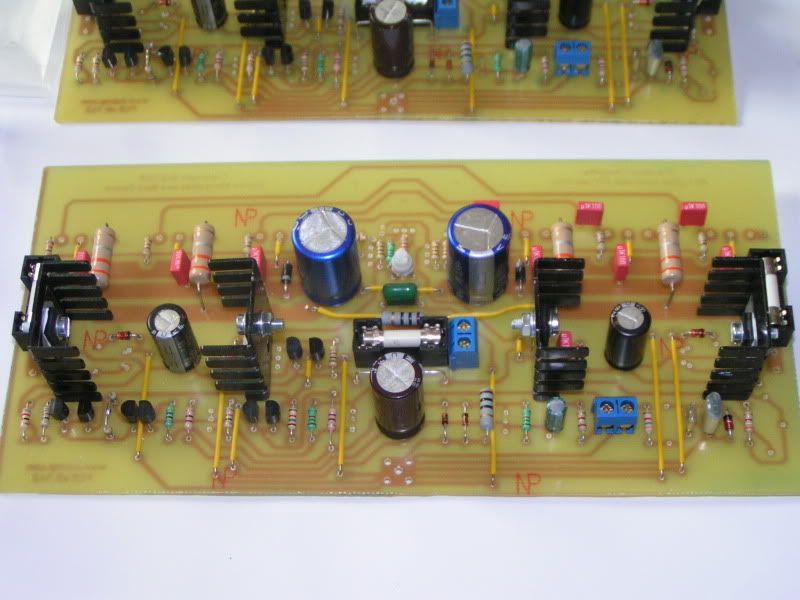
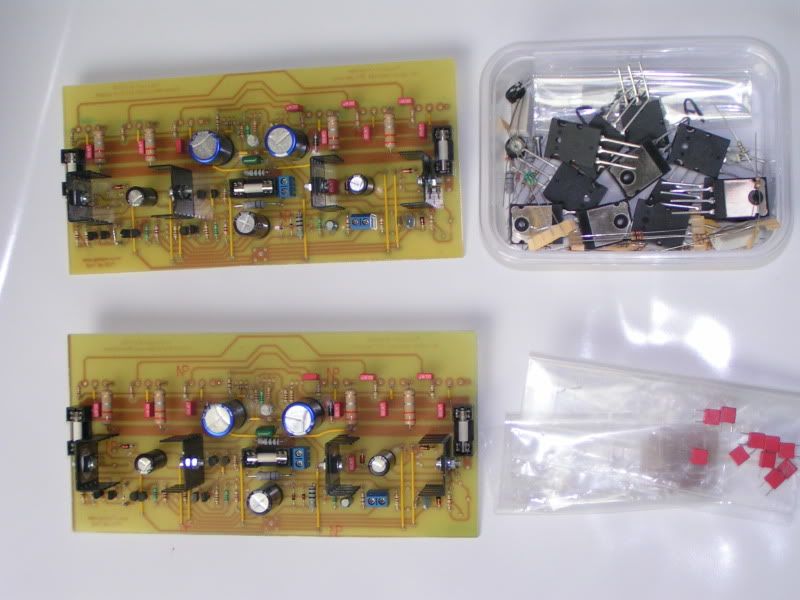
I will post more pics after completion. Thanks.
Hello everyone, i have a DX precision 1 work in progress. Still missing parts.


I will post more pics after completion. Thanks.
You will like it or Carlos will eat the boards 🙂
lol. Remember the crazy frenchman who ate a plane?
Will not be a problem to eat these boards as i love them so much
may be a problem to digest (hehehehe) but will be tastefull and for sure will sound great when smashing by my teeth...they are natural ones, despite i have 60 years old i have only one fake teeth.
regards,
Carlos
may be a problem to digest (hehehehe) but will be tastefull and for sure will sound great when smashing by my teeth...they are natural ones, despite i have 60 years old i have only one fake teeth.
regards,
Carlos
Attachments
Capacitors
Good morning to all!
a quick question, is it ok to use 50V (voltage rating) for the below capacitors?
C10-100pF
C6- 470pF
C12-12pF
C19 and C20-68pF
Thanks in Advance,
Junie
Good morning to all!
a quick question, is it ok to use 50V (voltage rating) for the below capacitors?
C10-100pF
C6- 470pF
C12-12pF
C19 and C20-68pF
Thanks in Advance,
Junie
Amp case
I found the below box in our office trash...thinking of something useful😛 A DX amp Case!!
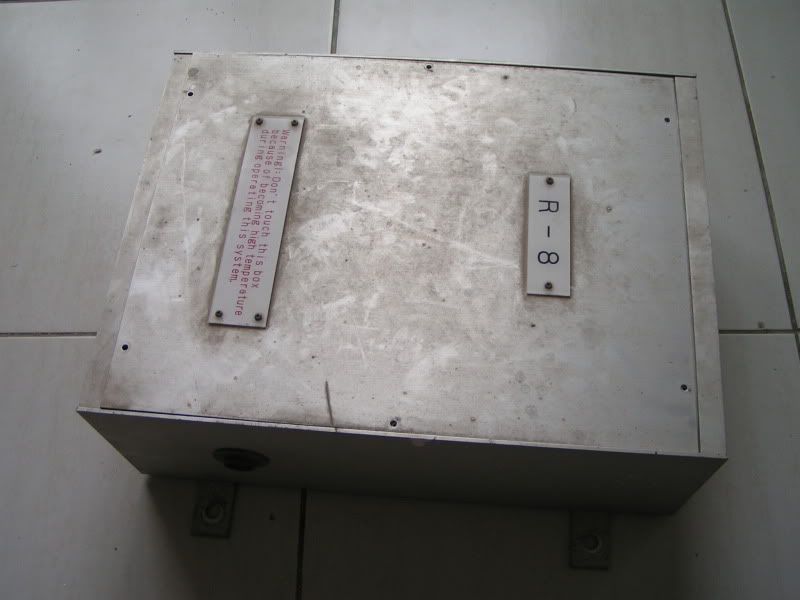

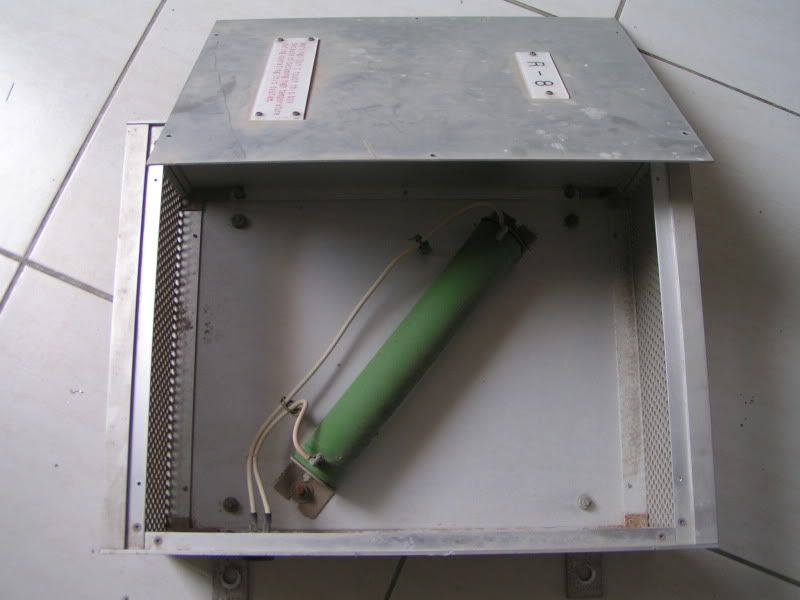

Cleaned it and Viola!!
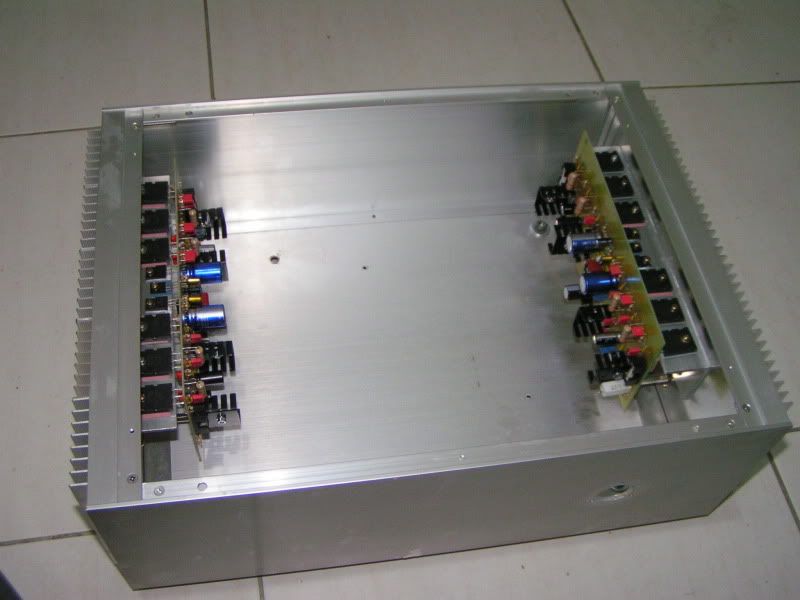
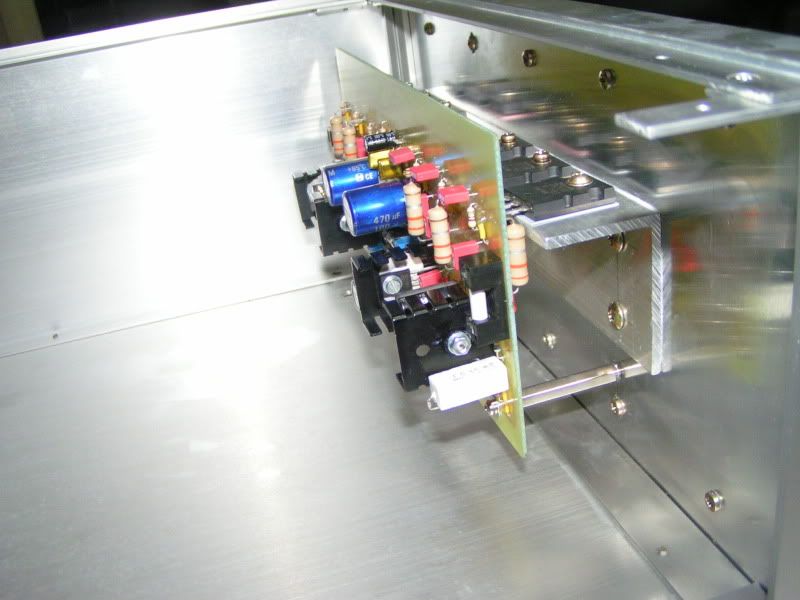
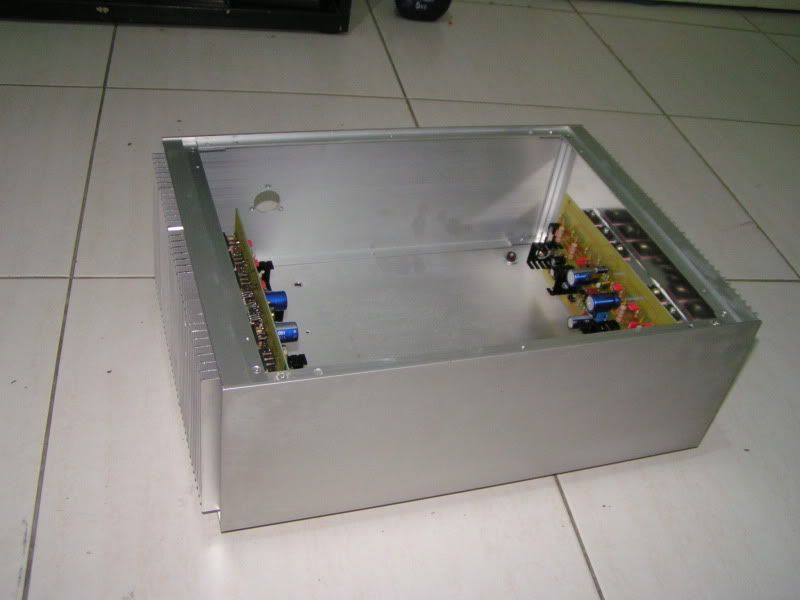
Almost done
I found the below box in our office trash...thinking of something useful😛 A DX amp Case!!




Cleaned it and Viola!!



Almost done
I found the below box in our office trash...thinking of something useful😛 A DX amp Case!!
Thank you , Junie !! 😎
I never thought of that mounting style using the Aluminum angle. A real space saver.
Great what you did with that E-waste as well !!
OS
Yes...no problem to use 50 volts capacitors
Nice construction...congratulations.
regards,
Carlos
Nice construction...congratulations.
regards,
Carlos
Just a note:
Just now I finished slightly modifying my DX Precision.
I changed the original unmatched 2n5551/5401 transistors Q1-4 with matched BC546C/556C (matched Q1 to Q3 and Q2 to Q4). I changed the original unmatched 2n5551 Q5,6 to a matched pair of 2n5551.
I changed the input low pass capacitor from the original 470pF capacitor, which I used a multilayer ceramic type, to a 270pF polystyrene type.
These changes have brought me a pretty big difference. The sound stage, which was present before but not extraordinary, is now twice as apparent. The sound quality has improved, notably the treble is more airy and you can perceive the spaces of silence in between every note easily. Voices are more accurate and understandable.
When listening to music I like to take each instrument and alternate listening to each one individually and now it is that much easier to perceive. I thought the amp sounded great before, but now it is even better.
Still using the amp in spaghetti mode until I figure out the enclosure. I plan to post pictures if (when) this ever happens.
Just now I finished slightly modifying my DX Precision.
I changed the original unmatched 2n5551/5401 transistors Q1-4 with matched BC546C/556C (matched Q1 to Q3 and Q2 to Q4). I changed the original unmatched 2n5551 Q5,6 to a matched pair of 2n5551.
I changed the input low pass capacitor from the original 470pF capacitor, which I used a multilayer ceramic type, to a 270pF polystyrene type.
These changes have brought me a pretty big difference. The sound stage, which was present before but not extraordinary, is now twice as apparent. The sound quality has improved, notably the treble is more airy and you can perceive the spaces of silence in between every note easily. Voices are more accurate and understandable.
When listening to music I like to take each instrument and alternate listening to each one individually and now it is that much easier to perceive. I thought the amp sounded great before, but now it is even better.
Still using the amp in spaghetti mode until I figure out the enclosure. I plan to post pictures if (when) this ever happens.
- Status
- Not open for further replies.
- Home
- Amplifiers
- Solid State
- Dx Precision, finally released... now debugged and better than HRII

